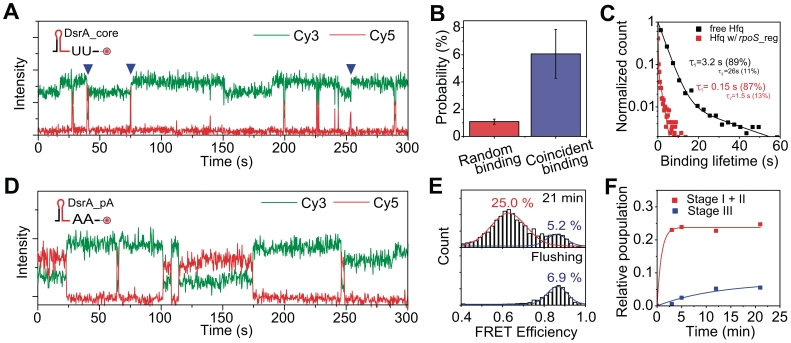Figure 5.
Competition of DsrA_core and rpoS_reg for the same proximal RNA binding site. (A) Representative intensity time traces of DsrA_core:rpoS_reg annealing. Cy5-labeled DsrA_core (2 nM), and Hfq (1 nM) were added in a rpoS_reg-immobilized detection chamber. Frequent coincidence of DsrA_core binding and Hfq dissociation/association events are indicated (blue triangles). (B) Comparison of the random binding and coincident binding probabilities. (C) Normalized histograms of DsrA_core binding lifetime to Hfq loaded with rpoS_core (red), and to free Hfq (black). (D) Representative intensity time traces of the experiment in which Cy5-labeled DsrA_pA (5 nM) and Hfq (2 nM) were added to a rpoS_reg-immobilized detection chamber. Ternary complex is much more stable compared to the case in (A). (E) FRET histogram after 21 min incubation (top), and after flushing with 300 mM NaCl solution at 24 min (bottom). (F) Product accumulation kinetics of DsrA_pA:rpoS_reg.

